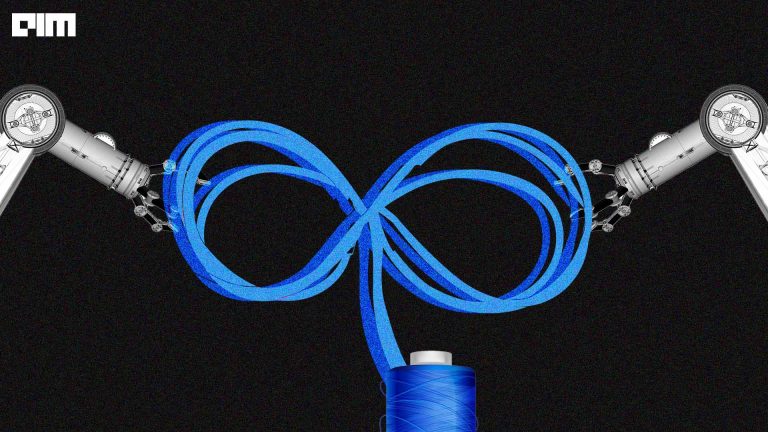“We are fascinated with robots because they are reflections of ourselves.”
This quote by robotics researcher Ken Goldberg holds true more than ever now. Robots are turning more human with every passing day. And Meta (previously Facebook) is further accelerating this rising trend. The company is advancing the frontiers of artificial intelligence (AI) in robotics and exploring waters in the realms of touch sensitivity.
Recently, Meta announced a new sensor to advance in the tactile sensing ecosystem. It is a field in robotics that aims to understand and replicate human-level touch in the physical world. Touch is an essential part of experiencing the environment. With these advancements, robots will be more efficient in interacting with the world around us, making them more capable. The four pillars of the touch-sensing ecosystem– hardware, simulators, libraries, benchmarks and data sets– are necessary to help build an AI system that can interact through touch.
Source: Facebook AI
Today, we take a look at the tech giant’s plans in the field of touch sensitivity.
<https://twitter.com/AIatMeta/status/1455144066698596357>
DIGIT
After decades of study, researchers are yet to crack general-purpose in-hand manipulation. It remains an unsolved challenge of robotics. However, as a step to enable better robotic manipulation, Meta has introduced DIGIT– a compact, high-resolution tactile sensor for in-hand manipulation.
DIGIT is a robotic fingertip sensor or touch-sensing hardware. Earlier last year, Meta (then Facebook) released the full open-source design of DIGIT. When compared to the other presently available commercial tactile sensors, DIGIT is cheaper to manufacture, and Facebook AI claims that it provides way more (hundreds of thousands) contact points than the rest, making it more useful and accessible to researchers.
This time on, Meta AI announced that it has partnered with MIT spin-off GelSight to commercially manufacture DIGIT, further making it accessible to researchers to help them carry out touch-sensing research and make rapid advancements.
Source: Facebook AI
TACTO
Open-sourced TACTO by Meta is a simulator for high-resolution vision-based tactile sensors that enables a faster experimentation platform, providing support to ML researchers, even in the absence of hardware. A simulator like TACTO plays a significant role in prototyping, debugging and benchmarking new advancements in robotics by allowing testing without the need for actually conducting experiments.
Furthermore, TACTO can render high-resolution touch readings at hundreds of frames per second, enabling researchers to simulate vision-based tactile sensors with different form factors that can be mounted on robots.
ReSkin
In a yet milestone event, Meta AI has partnered with Carnegie Mellon researchers to create ReSkin– synthetic skin for robotic hands. These open-source touch-sensing skins are two to three millimeters thick and made of plastic. ReSkin has a low form factor that can help robots learn high-frequency tactile sensing over larger surfaces. This generalised tactile sensing skin helps collect data and train AI models on touch-based tasks– teaching robots to hold or clasp with the right amount of pressure.
ReSkin offers tactile-sensing features for in-hand manipulations that can be used to design AI for the training of robots for tasks like– using a key to unlock a door, grasp delicate objects like berries. Further, it can be useful for measuring forces during human-object interactions.
Source: Facebook AI
How does it work?
ReSkin is a deformable elastomer with embedded magnetic particles. That is, it contains micro-magnetic particles that are capable of producing magnetic fields. When it comes in contact with another skin, the magnetic field particles are alternated, with the sensors recording a magnetic flux. This data, thus gathered, is then fed into the AI system to understand the touch and the force of the interaction.
ReSkin can also help provide researchers with high-frequency three-axis tactile signals for fast manipulation tasks, including clapping, catching, throwing, and slipping. Once it wears off, it can be stripped off and replaced.
Meta has revealed that 100 units of ReSkin can be created for less than $6. Each of these units will have a lifespan of 50,000 interactions while also having a high temporal resolution of up to 400 Hz and a spatial resolution of one millimetre with 90 per cent accuracy. The specs make ReSkin ideal to be used for arm sleeves, tactile gloves, and robot hands.
Summing up
DIGIT and ReSkin, taken together, along with Meta’s stimulators TACTO and its data sets, can make tactile perception accessible to researchers, taking AI beyond its proficiency in sound and vision. However, despite Meta AI’s advances, there is much work yet to be done in the tactical sensing space. For one, there is a need for the development of a better understanding of touch features that are more important for specific tasks and the requirement of the right ML computational structures to process this touch information.
Researchers at Meta AI said that improvements in touch sensing could help them advance AI, enabling the building of robots with enhanced functionalities and capabilities. Additionally, these can unlock possibilities in AR and VR, leading to innovations in industrial, agricultural and medical robotics. They are working towards making every single robot equipped with touch-sensing capabilities.



















































































